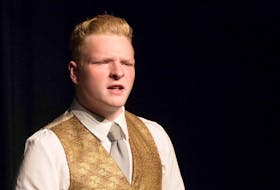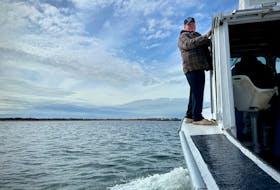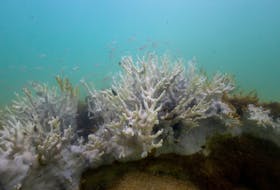Despite the fact the weekend’s rain is bad news for people on the west coast, it’s good news for Newfoundland and Labrador Hydro because until now Hydro’s reservoirs have been parched.
Because water is free; you have to pay for oil.

In oil’s favour, you can at least order it. You can’t order rain. And Hydro’s been running short for a while.
Documents filed with the province’s Public Utilities Board have pointed out the “dry year” problem: nine months of 2017 had lower-than-average rainfall.
The worst? October: “Weather conditions experienced in the fall of 2017 on the island have been dry, whereas typically multiple weather systems during fall result in heavy rain which adds substantially to Hydro’s reservoir storage. October 2017 was the third lowest inflow in Hydro’s record dating back to 1950.”
February and July had less than 50 per cent of normal precipitation.
December was no help, either. It was 32 per cent below usual precipitation numbers. That means Hydro’s reservoirs were, at the end of December, considerably lower than usual.
To keep the problem from worsening, Hydro’s been burning oil instead — or, as it is described in documents, “In order to be proactive, Hydro increased thermal generation starting on November 2, 2017. It is the intent to keep thermal generation above minimum until the decline in hydraulic energy storage slows or reverses and analysis indicates the requirement for less thermal generation.”
That continued into December. “Thermal generation at Holyrood above minimum unit production during December offset hydraulic generation and helped conserve water storage in Hydro’s reservoirs.”
Asked Friday about the reservoir levels, Newfoundland and Labrador Hydro’s vice-president for production, Jennifer Williams, downplayed the concerns, saying that, at this point, the utility hasn’t been forced to fire up its additional standby generation facilities, like the Holyrood gas turbine, to lower the burden on reservoirs.
“In addition, as of now, we do not need any additional energy from gas turbine operation. We have a number of weeks of more precipitation potential before that decision would be required,” Williams’ Friday email statement said.
“We expect precipitation and warm temperatures this weekend over many of our reservoirs. This rain will also likely melt snow in some reservoirs, resulting in increased water in storage.”
It all means, of course, that a fully operating Holyrood Generating Station is still integral. Its track record has not been perfect in recent years, and its — well — decrepitude was one of the main arguments for Muskrat Falls.
In filed documents, Hydro has warned the PUB that use of that standby generation was an option: “Currently, Hydro does not require standby generation to support reservoir levels. If conditions similar to the historic dry sequence were to occur in this coming winter, Hydro could require standby generation to be operated for energy. Should this occur, Hydro will inform the Board in advance of such conditions.”
It all means, of course, that a fully operating Holyrood Generating Station is still integral. Its track record has not been perfect in recent years, and its — well — decrepitude was one of the main arguments for Muskrat Falls.
Hydro thinks the plant will manage: “Hydro does not anticipate reliability issues related to the current planned level of Holyrood generation as the plant’s maintenance is completed with the expectation it could have to operate to the maximum possible capability,” the utility told the PUB.
It’s interesting, because these units have been described as clapped-out and on their last legs; their legs had better be pretty good this winter.
And there have already been hiccups; Holyrood’s Unit 3 was wound back to supplying 105 megawatts instead of its expected 135 MW for more than two weeks in December because of an air heater fouling problem.
Holyrood Units 1 and 2, meanwhile, have had limited output because of high furnace pressure problems: “Hydro continues to work towards restoring full load on Unit 1 and Unit 2. Further analysis and planning is required,” the utility told the PUB.
Another option? Early connection of the Maritime Link would at least let us buy power if we hit some kind of wall.
But the weekend’s rain may have been just in time.
Russell Wangersky’s column appears in 35 SaltWire newspapers and websites in Atlantic Canada. He can be reached at [email protected] — Twitter: @wangersky.

![['Holyrood generating station. — Telegram file photo']](https://saltwire.imgix.net/holyrood-2708006.jpg?cs=srgb&fit=crop&h=568&w=847&dpr=1&auto=enhance%2Cformat%2Ccompress)







